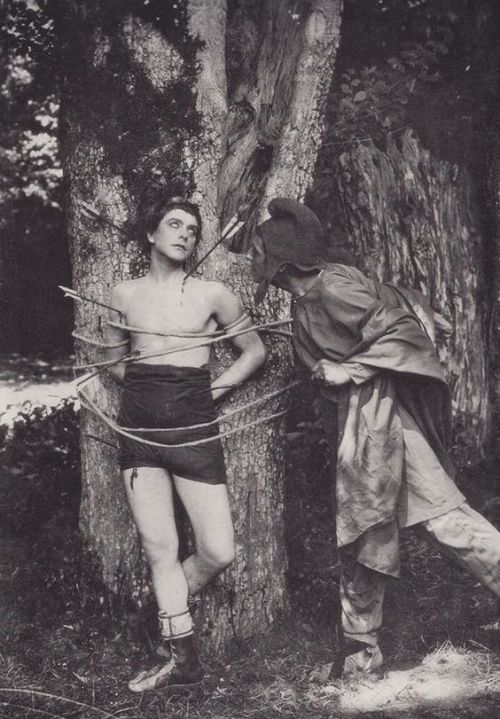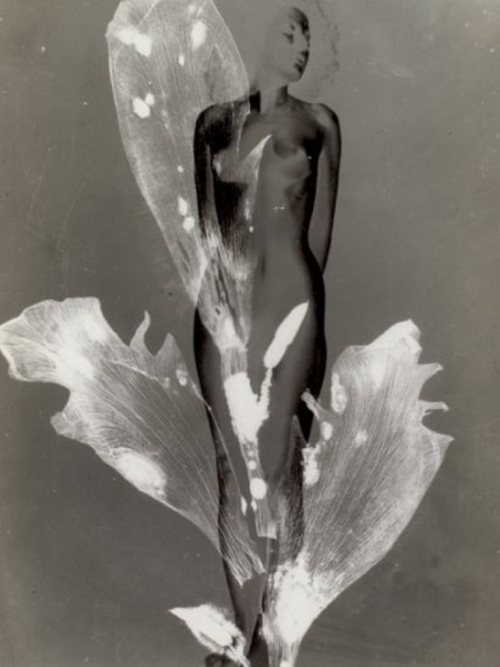Jean Cocteau By Germaine Krull

Jean Cocteau by Germaine Krull
More Posts from Raskopal and Others

Enrico Guazzoni The Martyrdom of St. Sebastian (Livio Pavanelli)
Film still from “Fabiola”, 1918

Pierre Boucher, Femme-fleur, inversion négatif-positif, solarisation et photogramme, 1937

Guerrillera de la "Organización del Pueblo en Armas en las montañas." Guatemala. Junio, 1982. Photo: Pedro Valtierra


Andrei Tarkovsky, “Nostalghia”. 1983.




Chris Marker - Blue Helmet (1995)

Girls in the garden at “Orphan City,” an enormous orphan refugee camp of more than 30,000 children managed by Near East Relief in Alexandropol (modern Gyumri, formerly Leninakan), Armenia, circa 1920.

Usually we imagine that true love will be intensely pleasurable and romantic, full of love and light. In truth, true love is all about work. The poet Rainer Maria Rilke wisely observed: “Like so much else, people have also misunderstood the place of love in my life, they have made it into play and pleasure because they thought that play and pleasure was more blissful than work; but there is nothing happier than work, and love, just because it is the extreme happiness, can be nothing else but work …” The essence of true love is mutual recognition – two individuals seeing each other as they really are. We all know that the usual approach is to meet someone we like and put our best self forward, or even at times a false self, one we believe will be more appealing to the person we want to attract. When our real self appears in its entirety, when the good behaviour becomes too much to maintain or the masks are taken away, disappointment comes. All too often individuals feel, after the fact – when feelings are hurt and hearts are broken – that it was a case of mistaken identity, that the loved one is a stranger. They saw what they wanted to see rather than what was really there.
True love is a different story. When it happens, individuals usually feel in touch with each other’s core identity. Embarking on such a relationship is frightening precisely because we feel there is no place to hide. We are known. All the ecstasy that we feel emerges as this love nurtures us and challenges us to grow and transform. Describing true love, Eric Butterworth writes: “True love is a peculiar kind of insight through which we see the wholeness which the person is – at the same time totally accepting the level on which he now expresses himself – without any delusion that the potential is a present reality. True love accepts the person who now is without qualifications, but with a sincere and unwavering commitment to help him achieve his goals of self-unfoldment – which we may see better than he does.” Most of the time, we think that love means just accepting the other person as they are. Who among us has not learned the hard way that we cannot change someone, mold them and make them into the ideal beloved we might want them to be. Yet when we commit to true love, we are committed to being changed, to being acted upon by the beloved in a way that enables us to be more fully self-actualised. This commitment to change is chosen. It happens by mutual agreement. Again and again in conversations the most common vision of true love I have heard shared was one that declared it to be “unconditional.” True love is unconditional, but to truly flourish it requires an ongoing commitment to constructive struggle and change.
bell hooks, All About Love: New Visions

Botanical Study N° 4 | Fawn DeViney



Unfinished Roman-Era Statue Unearthed in Greece
An unfinished Roman-era statue made of marble was unearthed in an excavation in Veria recently, according to a statement issued by the Greek Ministry of Culture on Wednesday.
The statue, which does not have a head, is three-fifths life size; at this point it is unknown who it depicts, although traditionally the only unclothed figures in Greek statuary are of gods or athletes.
The spectacular find, taking place almost at the end of the year, occurred in the center of the Ancient Greek city of Veria, in the heart of Macedonia, very close to the archaeological site of Agios Patapios.
Statue remarkable for its state of incompleteness
The discovery was made as a result of excavation under the auspices of the Ephorate of Antiquities of Imathia, in one of the few pieces of land in the city that had no buildings on it. The statue was unearthed on Friday, December 17.
The statue, which stands almost one meter tall, dates back to imperial times, when Veria, as the seat of the Macedonian Commonwealth, was the first city of Macedonia. It served as the center of political and cultural developments in the region and at the same time was an axis of cohesion and a point of reference for all ancient Macedonian traditions.
With a cloak thrown around his left shoulder and wrapped around his arm, the statue of a young man with an athletic body is seen emerging from a mass of marble, recalling the classic patterns and images of statues related to Apollo or Hermes.
It is the work of a very skilled craftsman who, for whatever reason, never finished the piece. The sculptor, although he had advanced far in the creation of his sculpture, had reached a point almost at the final stage when he apparently decided to abandon the effort, unfinished.
This fact makes the discovery of the statue even more significant, however, since it gives art historians an opportunity to study not only the style, but the production techniques of these types of artworks.
The statue may have been meant as an exact copy or a freer recreation of a famous original; either way, it can help researchers understand the Veroia school of sculpture from a completely different point of view.
Its typical sculptural forms, which had particularly recognizable features already in the Hellenistic period, reached their apogee at the time of the greatest prosperity of the city, when the Antoninians and the “Philalexandrian” Severus reigned at the end of the second and beginning of the third century AD.
Excavations at the plot are continuing, according to the statement by the Greek Ministry of Culture.
By Patricia Claus.
-
 monariver66 liked this · 10 months ago
monariver66 liked this · 10 months ago -
 water-lily-lay reblogged this · 1 year ago
water-lily-lay reblogged this · 1 year ago -
 water-lily-lay liked this · 1 year ago
water-lily-lay liked this · 1 year ago -
 may-13 liked this · 2 years ago
may-13 liked this · 2 years ago -
 marysmirages liked this · 2 years ago
marysmirages liked this · 2 years ago -
 brasil-e-com-s liked this · 2 years ago
brasil-e-com-s liked this · 2 years ago -
 gudeefemm reblogged this · 2 years ago
gudeefemm reblogged this · 2 years ago -
 gudeefemm liked this · 2 years ago
gudeefemm liked this · 2 years ago -
 romanobman reblogged this · 2 years ago
romanobman reblogged this · 2 years ago -
 shanghai-lily liked this · 2 years ago
shanghai-lily liked this · 2 years ago -
 antichrstar liked this · 2 years ago
antichrstar liked this · 2 years ago -
 raskopal reblogged this · 3 years ago
raskopal reblogged this · 3 years ago -
 fromseigneur liked this · 3 years ago
fromseigneur liked this · 3 years ago -
 fromseigneur reblogged this · 3 years ago
fromseigneur reblogged this · 3 years ago -
 nerdloser7 reblogged this · 3 years ago
nerdloser7 reblogged this · 3 years ago -
 nerdloser7 liked this · 3 years ago
nerdloser7 liked this · 3 years ago -
 driftingisland liked this · 3 years ago
driftingisland liked this · 3 years ago -
 commemoratory liked this · 3 years ago
commemoratory liked this · 3 years ago -
 anticlimaxstory reblogged this · 3 years ago
anticlimaxstory reblogged this · 3 years ago -
 cheminer-poesie-cressant liked this · 3 years ago
cheminer-poesie-cressant liked this · 3 years ago -
 nkbrosa liked this · 3 years ago
nkbrosa liked this · 3 years ago -
 bythemystic liked this · 3 years ago
bythemystic liked this · 3 years ago -
 welcometomyplanetmotherfucker liked this · 3 years ago
welcometomyplanetmotherfucker liked this · 3 years ago -
 sailok2019 liked this · 3 years ago
sailok2019 liked this · 3 years ago -
 breakfasttimesworld reblogged this · 3 years ago
breakfasttimesworld reblogged this · 3 years ago -
 tapecase-space liked this · 3 years ago
tapecase-space liked this · 3 years ago -
 adam-field liked this · 3 years ago
adam-field liked this · 3 years ago -
 riceli liked this · 3 years ago
riceli liked this · 3 years ago -
 bleueciel reblogged this · 3 years ago
bleueciel reblogged this · 3 years ago -
 sadbby98 reblogged this · 3 years ago
sadbby98 reblogged this · 3 years ago -
 sadbby98 liked this · 3 years ago
sadbby98 liked this · 3 years ago -
 gattadeicarpazi liked this · 3 years ago
gattadeicarpazi liked this · 3 years ago -
 dog-house-riley liked this · 3 years ago
dog-house-riley liked this · 3 years ago -
 happyzenmonk reblogged this · 3 years ago
happyzenmonk reblogged this · 3 years ago -
 happyzenmonk liked this · 3 years ago
happyzenmonk liked this · 3 years ago -
 la-cocotte-de-paris reblogged this · 3 years ago
la-cocotte-de-paris reblogged this · 3 years ago -
 ichbinsowildnachdeinemrdbeermund reblogged this · 3 years ago
ichbinsowildnachdeinemrdbeermund reblogged this · 3 years ago -
 ichbinsowildnachdeinemrdbeermund liked this · 3 years ago
ichbinsowildnachdeinemrdbeermund liked this · 3 years ago
